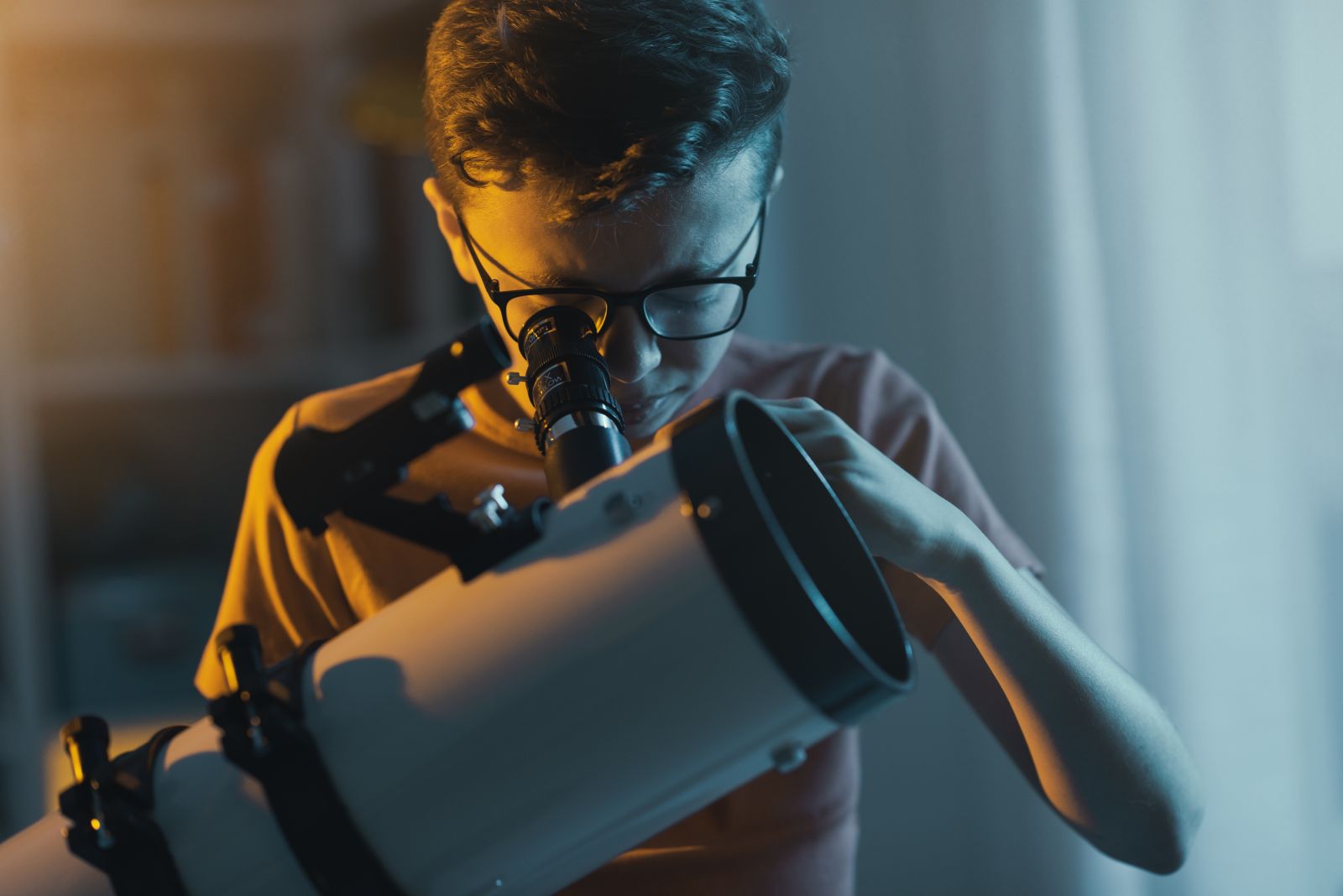
Craveology Cafe and the North Star Science Store are temporarily closed for renovation.

Make sure you and your children are properly clothed for your stargazing adventure. Since it’s at night, you might get cold, or you may be swatting mosquitoes. Wear several layers if you’re in a cooler climate. There are some supplies you may want to buy to enhance your stargazing experience. While you can stargaze with just your eyes, you may want to invest in a telescope or binoculars. You don’t need to buy expensive ones – you can even look online to see if you can find a used telescope or pair of binoculars.
Whether you’re starting with binoculars or a telescope, make sure the eyepieces have “eye cups” that block the light from the corners of your eyes. These let you see into the sky much better.
Download star-map apps on your phone that show you exactly what you’re looking at. These awesome apps include Star Chart (for iOS or Android). Install the app and then point your phone’s camera to the sky – the app tells you the constellation or the stars you’re looking at.
There may be stargazing gatherings in your area, often called star parties. People bring their own telescopes and meet at a location to all gaze at the sky, sharing their passion for stargazing along with knowledge. This would be a great way for your kids to learn from others with more stargazing knowledge than you have.
Don’t forget your computer. You can download cool astronomy software, giving you a visual to teach astronomy through star-mapping programs that show the night sky near where you live, by dates and latitudes. Other software shows and charts planet positions and moon phases for dates which are quite useful for planning your stargazing outings.
According to Wikihow, Celestia is a good freeware, three-dimensional astronomy program that lets your kids tour stars and the solar system with an easy destination search function. The program also lets you browse the Milky Way and other solar systems and read about them. You kids can even make their own short, animated tours with Celestia.
Another great astronomy site and phone app is Google Sky. It operates using global positioning satellites. Just point your phone where you’re gazing at the sky and the app tells you the constellation.
To help your stargazing experience, you can take your phone with star apps or your computer with star-mapping software along with you as you head out at night but double-check how well your computer, tablet, or phone can handle inclement weather like cold temperatures or moisture.
If your children are younger, find books that can help you teach your child about astronomy in simple language with clear pictures and concepts their young minds can relate to. Look for a book to keep at home and a smaller reference book you can take with you outside at night as you gaze upward. wikiHow recommends Howard Schneider’s “Backyard Guide to the Night Sky” as a good field guide.
Prepare for your night out in the elements as you’re star-gazing. Bring some kind of cushioned mat to make it more comfortable to stand, sit, or lie down. Consider bringing other items of comfort, like a sleeping bag, folding chair, or camping chair. If you’re trekking to your stargazing location, you’ll want lightweight, easy-to-carry items, a flashlight to light your way, and snacks and water. You could even try a mosquito net if you’re stargazing in summer or hot climates. Poke a hole in the mosquito netting to fit over the telescope.
Blocking the light around you is an important aspect of stargazing. If you don’t have natural barriers, you can take your own along, fashioning it with cheap PVC piping and black fabric. As long as the weather isn’t windy, this method works well, keeping street lights and other light sources from interfering.
For an even easier and easy-to-transport solution, place a towel or dark cloth over your head when you’re looking through a telescope or binoculars.
Read more from Evan Dunn at porch.com